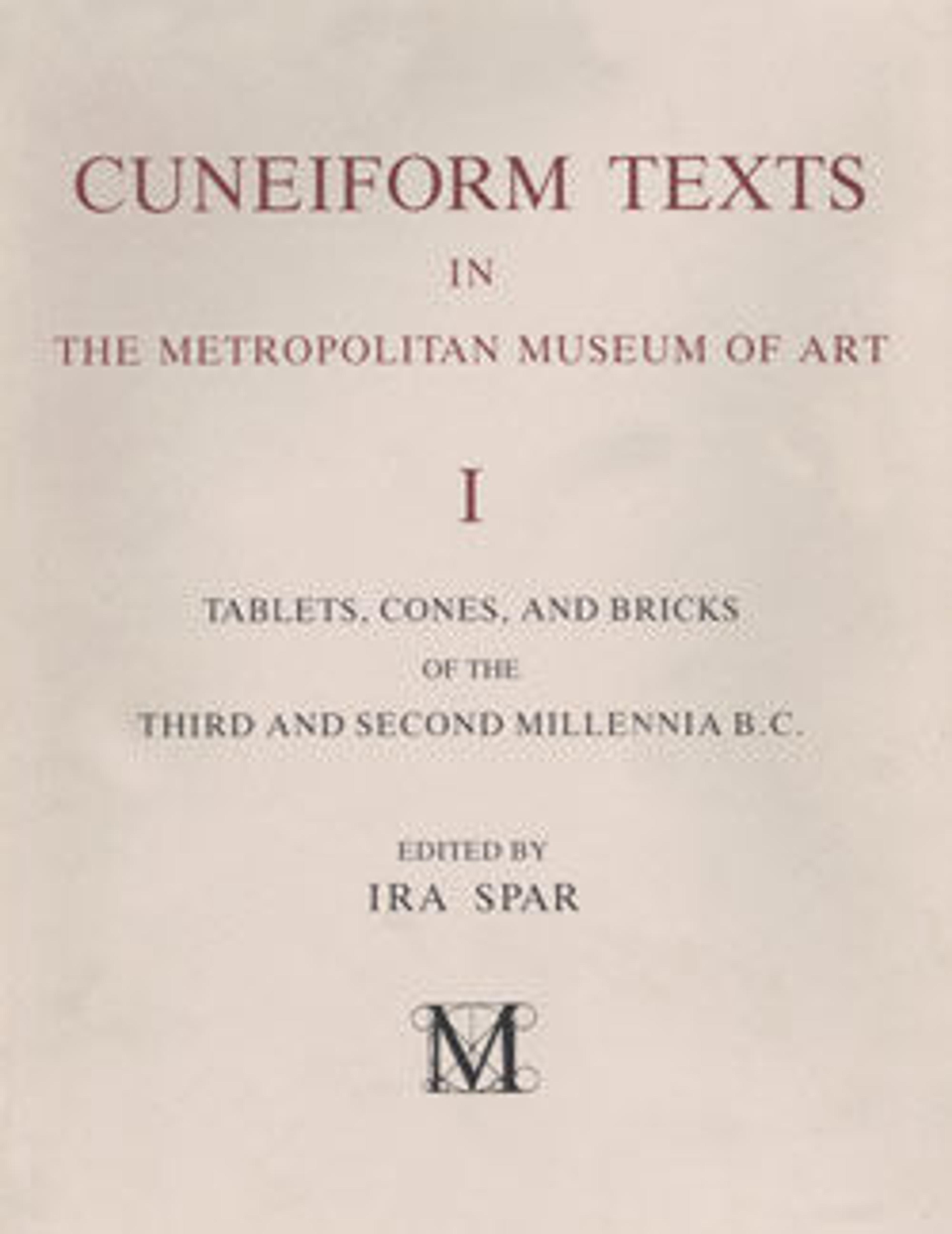Cuneiform tablet: distribution of copper knives
The invention of writing in approximately 3300 B.C. was one of many developments in administrative technology--including the use of geometric tokens for counting and cylinder seals to guarantee transactions--that accompanied the growth of the first cities and states in southern Mesopotamia. Proto-cuneiform is the name given to the earliest form of writing--pictograms that were drawn on clay tablets. Gradually, the pictograms became abstracted into cuneiform (Latin, "wedge-shaped") signs that were impressed rather than drawn. At its greatest extent, cuneiform writing was used from the Mediterranean coast of Syria to western Iran and from Hittite Anatolia to southern Mesopotamia. It was adapted to write at least fifteen different languages. The last dated cuneiform text has a date corresponding to A.D. 75, although the script probably continued in use over the next two centuries.
This tablet was excavated at the site of Nippur in Mesopotamia. The cuneiform text concerns the distribution of copper knives and records the various quantities issued to individuals. It was found in level VII B of the Inanna Temple along with objects such as statues, fragments of shell inlay, and vessels. The temple was excavated by a joint expedition of the Oriental Institute of the University of Chicago and the American Schools of Oriental Research. Inanna, whose name means "Queen of Heaven," was the goddess of fertility embodied in the planet Venus, which appears in the morning and again in the evening. Her temple at Nippur was named E-duranki, "the bond of heaven and earth." Excavations showed that this temple was in existence by the Early Dynastic I period and that sacred structures were rebuilt in the same sanctified location until the Parthian period nearly three thousand years later.
This tablet was excavated at the site of Nippur in Mesopotamia. The cuneiform text concerns the distribution of copper knives and records the various quantities issued to individuals. It was found in level VII B of the Inanna Temple along with objects such as statues, fragments of shell inlay, and vessels. The temple was excavated by a joint expedition of the Oriental Institute of the University of Chicago and the American Schools of Oriental Research. Inanna, whose name means "Queen of Heaven," was the goddess of fertility embodied in the planet Venus, which appears in the morning and again in the evening. Her temple at Nippur was named E-duranki, "the bond of heaven and earth." Excavations showed that this temple was in existence by the Early Dynastic I period and that sacred structures were rebuilt in the same sanctified location until the Parthian period nearly three thousand years later.
Artwork Details
- Title: Cuneiform tablet: distribution of copper knives
- Period: Early Dynastic III
- Date: ca. 2600–2350 BCE
- Geography: Mesopotamia, Nippur
- Medium: Clay
- Dimensions: 6.8 x 4.9 x 1.9 cm (2 5/8 x 1 7/8 x 3/4 in.)
- Credit Line: Rogers Fund, 1962
- Object Number: 62.70.95
- Curatorial Department: Ancient West Asian Art
More Artwork
Research Resources
The Met provides unparalleled resources for research and welcomes an international community of students and scholars. The Met's Open Access API is where creators and researchers can connect to the The Met collection. Open Access data and public domain images are available for unrestricted commercial and noncommercial use without permission or fee.
To request images under copyright and other restrictions, please use this Image Request form.
Feedback
We continue to research and examine historical and cultural context for objects in The Met collection. If you have comments or questions about this object record, please complete and submit this form. The Museum looks forward to receiving your comments.
